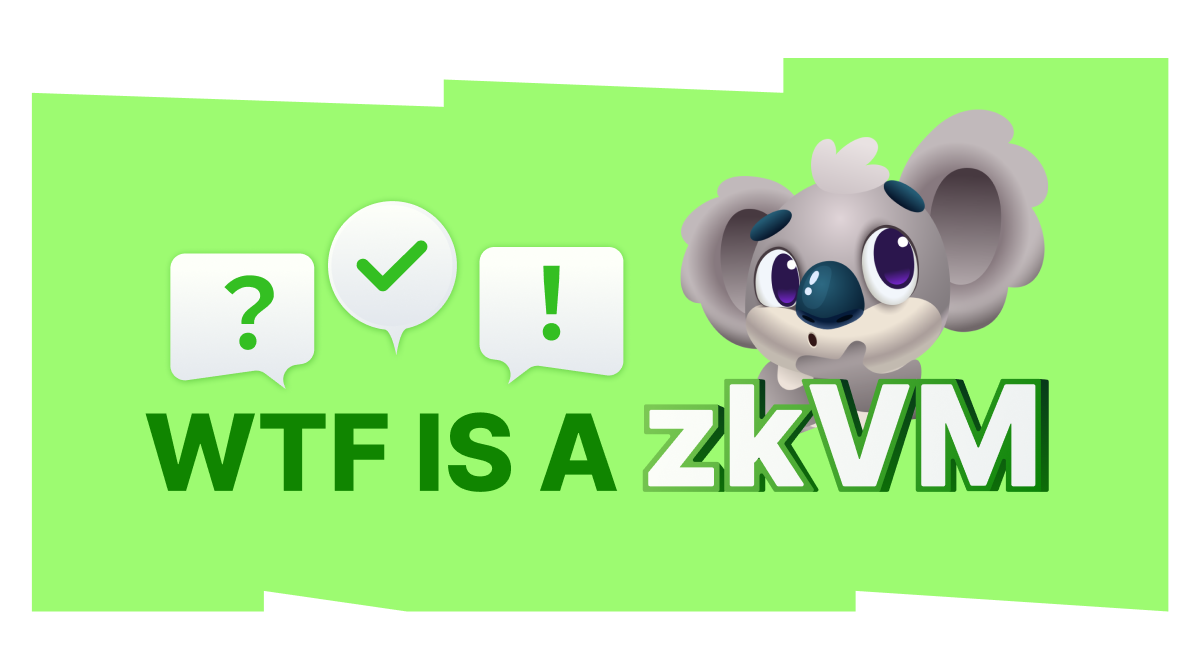WTF is a zkVM?

Layer 1 blockchains like Ethereum achieve security by having every network participant verify every transaction. While this provides maximum security, it's also why these networks are slow and expensive. This is precisely why Layer 2 solutions exist to process transactions faster and more efficiently. But this creates a new challenge, how do you prove all these transactions are correct without falling back on the same time-consuming verification process that made Layer 1s slow in the first place?
The Zero-Knowledge Virtual Machine (zkVM) is a technological innovation that transformed how Layer 2s handle this verification process. All the complex computations happening on Layer 2, from simple token transfers to sophisticated DeFi operations, need to be proven valid without slowing down the entire network. While previous solutions forced users to pay high fees or wait days for transaction finality, zkVMs offer a way to generate quick, efficient proofs that anyone can verify in seconds.
When Layer 2 networks can verify transactions more efficiently, it translates to profound benefits for users: lower fees, faster processing times, and better overall performance. It's the difference between paying dollars instead of cents for transactions or waiting minutes instead of days for confirmation.
Understanding the Basics
Before we dive into zero-knowledge proofs, let's understand what a Virtual Machine actually is. In blockchain, a Virtual Machine is essentially a computer program that executes other programs, like a universal translator that allows different applications to run on the blockchain. Ethereum's Virtual Machine (EVM), for example, is what allows developers to create and users to interact with smart contracts.
Now, add "zero-knowledge" technology to this equation. Zero-knowledge proofs allow one party to prove something is true without revealing the underlying information. A real-world example would be like proving you're old enough to enter a venue without showing your actual birth date. A zkVM combines these concepts, creating a system that can execute programs and generate proofs of their correct execution, all while maintaining privacy and efficiency.
Another way to visualize it is that traditional blockchain verification is like having to review every line of a thousand-page book to verify the summary is accurate. A zkVM, on the other hand, can generate a compact proof that confirms the entire book's contents without anyone needing to read through it.
How zkVM Works
The Three Components
A zkVM is built on three essential elements:
- Compiler: Translates standard programming code into zkVM-compatible instructions
- Virtual Machine: Executes the translated code, similar to how your computer runs programs
- Prover: Generates cryptographic proof that all computations were performed correctly
Traditional blockchain verification methods force networks to make difficult tradeoffs. The optimistic (rollup) approach trusts first and verifies later, which can take days to finalize if challenges arise. Full verification using zero-knowledge proofs upfront provides immediate security but proves too expensive and slow for practical use. Imagine having to choose between trusting someone to return a borrowed item within a week, or spending hours checking their entire history of lending and borrowing before letting them borrow anything.
How Morph Implements zkVM
Morph's unique approach to Layer 2 scaling has always combined the best of both optimistic and zero-knowledge systems through our Responsive Validity Proof (RVP) mechanism. This hybrid solution processes transactions optimistically (meaning we assume transactions are correct) for speed and efficiency but uses zero-knowledge proofs when challenged for enhanced security.
But it gets even better. We've recently upgraded our zero-knowledge component to SP1 zkVM, taking our verification capabilities to the next level:
- From complex cryptographic implementations to developer-friendly Rust-based code
- From slow proof generation to orders of magnitude faster with SP1's Prover Network
- From 100 transactions per block limit to unlimited scalability
As the global consumer layer, our implementation of SP1 zkVM exemplifies our approach to blockchain development. We're thoughtfully implementing technologies that make blockchain more accessible and practical for everyday use. For users, this means enhanced security through thoroughly audited code, faster settlements with 2-day finality, lower costs through efficient off-chain computation, and unlimited scalability for future growth. In the end, true innovation isn't measured by computational efficiency alone, but by how it improves the experience for real users.




